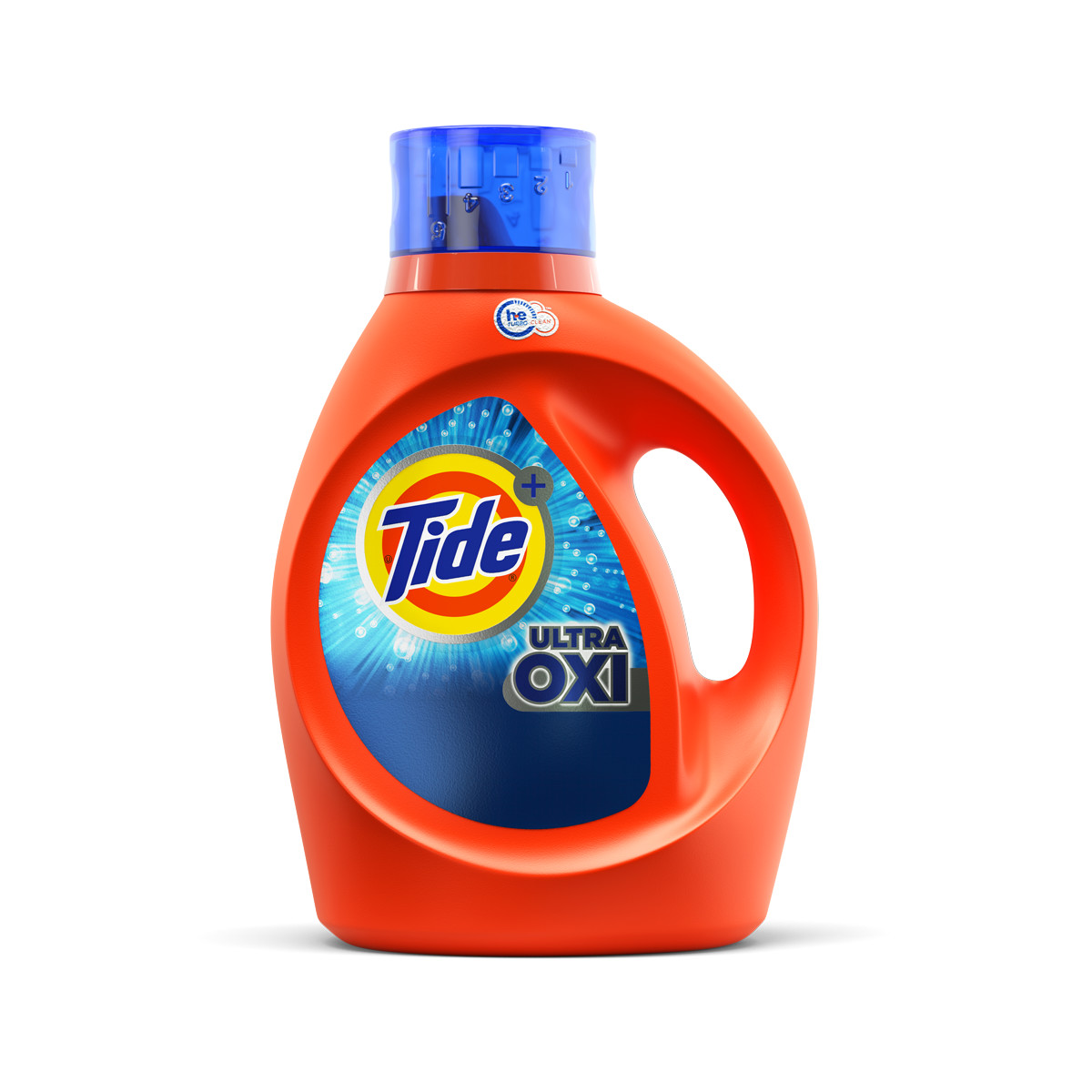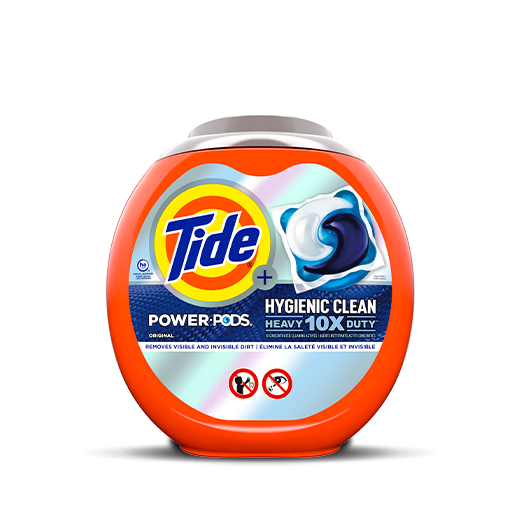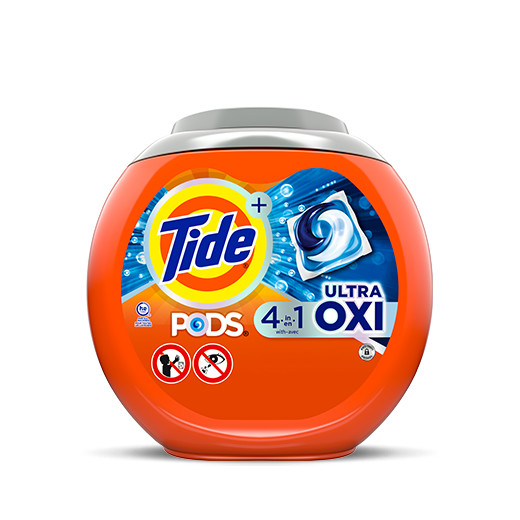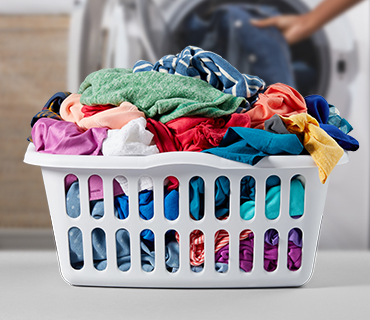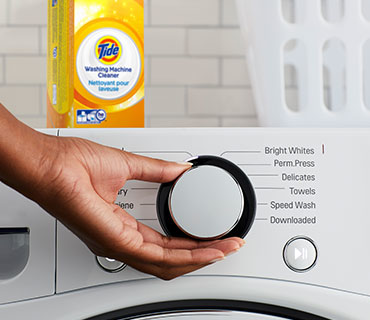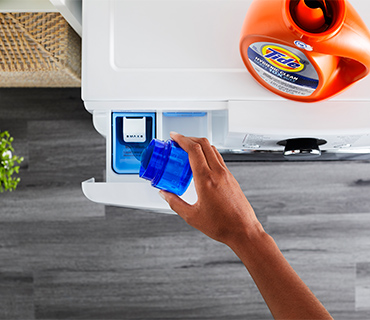The Ultimate Washing Machine Capacity and Load Size Guide
Is there a standard washing machine size? What’s your washing machine’s capacity? How much is an average load of laundry? Questions you have probably asked yourself before, so at Tide, we’ve decided to get to the bottom of it. Read on to find out about how different types of washers are different in capacity, how you can calculate your load size, and how to load a washing machine.
Washing machine size by type
The capacity of a washer can often play a huge role when buying a new one, so it’s important to know how different types of washing machines differ in average.
Compact washers: 2.30-2.45 cubic feet
Standard or high-efficiency top-load washing machines: 3.1-4 cubic feet
Front-load washers: 4.2-5 cubic feet
How to calculate your washing machine’s capacity
Washing machines come in different sizes and capacities, so there’s no standard washing machine size that would tell you the size of your drum. If you’d like to know, however, and you’ve lost the manual for your machine, here’s a simple formula for you to calculate the tub capacity of a washer:
Volume in cubic feet = r times r times pi times D
Use the following key for this equation:
r = radius in feet, half of the diameter
pi = approximately 3.141
D = the depth of your machine in feet
If you follow this formula, you’ll be able to get the capacity of your washing machine in cubic feet. For example, if you have a machine with a diameter of 1.5 feet and its depth is 0.5 feet, the volume will be 1.5*1.5*3.141*0.5 = 3.533 cubic feet.
How to calculate load size
Now that you know all about the capacity of your washing machine, it’s time to talk about how much you can fit in there, which is measured by load size. After all, it’s important to know how to load it for maximum effectiveness, while saving money, water and energy. Not to mention that correct dosing is so much easier when you know your load size. To get the best results, simply follow the load-size recommendations noted for each cycle:
Medium/regular load: When the drum is around half full, you have a medium or regular wash.
Large load: If you want to do a large load, the washer should be three-quarters full.
Extra-large load: If you have an extra-large amount of laundry, you can go for an extra-large load size. Be careful not to overload your machine, though, since your clothes need to be able to tumble freely. So if you want the best results, avoid packing them too tightly in the washer. We’ll give you tips on how to check if your machine is full in a later section.
Remember, different load sizes require different quantities of detergent, so make sure to check out the instructions before starting a program.
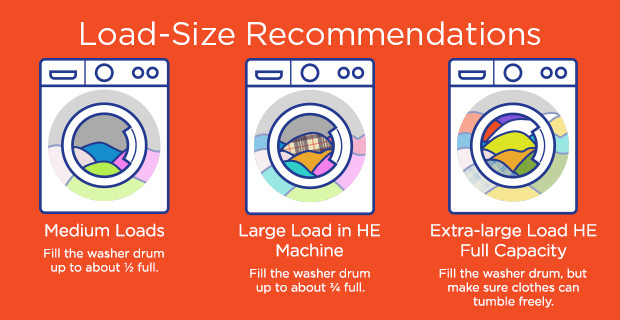
Washing machine load size chart
You can also determine the size of your load by weight or the amount of clothes as well. Use the following laundry load size chart as a guide to find out what kind of load you’re about to wash.
Medium/regular load: This works out to a load of approximately 6 pounds.
Large load: A large load in a HE machine is approximately 11 pounds.
Extra-large load: If you have a HE machine, then an extra-large load at full capacity is around 21 pounds.
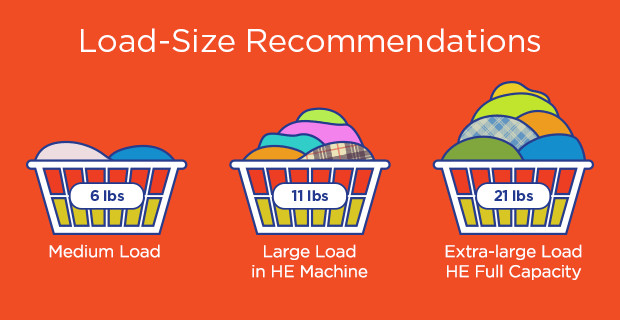
However, it’s not easy to eyeball how much your laundry weighs. So, to make things a little easier, here’s a visual guide to help you see what various load sizes look like:
Medium/regular load: If you can scoop up your laundry in an armload or less, then you have a medium load.
Large load: When you pick up your laundry, and it’s a full armload, then you have a large load.
Extra-large load: You know you’re dealing with an extra-large load when you need to make two trips to the washer, because one armload is simply not enough. Just make sure you leave enough of a gap in the drum so that your hand can fit inside, allowing the clothes to tumble freely.
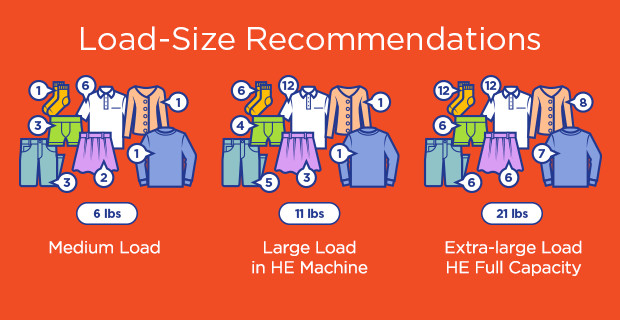
To give you a more itemized idea about how much laundry can fit in various load sizes, you can see a more specific guide in our diagram below. Based on our testing, here’s what you can fit in the various load sizes based on an average machine:
Medium/Regular load: If you’re washing on a medium load, then your load could be made up of approximately: 6 men’s t-shirts, a pair of socks, 2 skirts, 1 women’s sweater, 1 men’s sweater, 3 pairs of pants, 3 pairs of underwear.
Large load: A large load in an HE Machine could approximately take: 12 men’s t-shirts, 6 pairs of socks, 3 skirts, 1 women’s sweater, 1 men’s sweater, 5 pairs of pants, 4 pairs of underwear.
Extra-large load: If you have an HE machine, then an extra-large load might look like approximately: 12 men’s t-shirts, 12 pairs of socks, 6 skirts, 8 women’s sweaters, 7 men’s sweaters, 6 pairs of pants and 6 pairs of underwear.
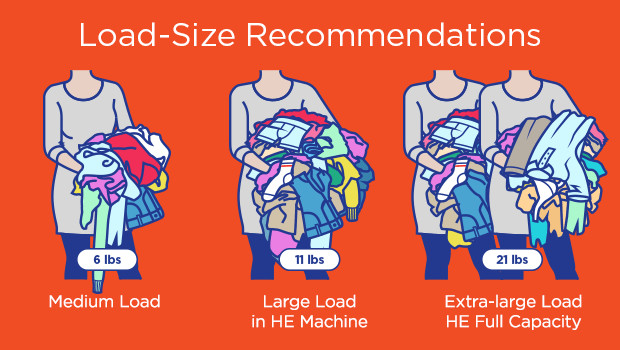
How to load a washing machine
Just put clothes in it until it’s full, right? Well, it’s not that simple. Overloading a washing machine is a fairly common mistake since many people assume that it’s full when it’s full to the brim. What they’re essentially doing with this is leaving no space for the clothes to tumble, or water to properly fill up the drum so the detergent can circulate. By overloading the machine you not only risk mechanical failure in the future, but you’re hindering the washing process itself.
So here’s the palm trick you could try every time to check if your machine is overloaded: Just place your hand into the drum—it’s easy as that. If your hand fits between your clothes and the wall of the drum, then you have the perfect load size. If not, it’s best to take something out. If you find you’ve got even more space in there, you can add more clothes to save more water.
If you have no more clothes to wash, and you really just need to do one load, then check to see if your machine has a half-load setting on it. This will use less water than a full load. If you’re curious what other settings your washer may have, check out our guide on how to use a regular washing machine or a high-efficiency one.
Frequently asked questions on washing machines and load sizes
How big is a load of laundry?
You have a medium or regular load if the drum is around half full, for a large load you’ll have to fill it until three-quarters full, and if you have even more laundry to do, fill it up until you can fit your palm between the wall of the drum and your clothes.
How big is a small load of laundry?
Anything that’s smaller than a medium load—when the machine’s drum is half full—can be considered small. If you have nothing else to add to the load, see if your machine has a half-load setting to conserve water.
How much laundry can I put in a top loader?
Every machine is different when it comes to the load sizes they can handle. Top loaders are usually not as large as front-loading machines, so a full load would be about 12 pounds of laundry. Make sure to check the washer’s capacity recommendation for the exact amount.
How many towels can I wash in one load?
If you know the load size your washing machine can take, it’s easy to calculate. A small towel weighs about a half pound, and a large towel is about one and a half pounds.
How do I know my washer’s load size?
Generally if your machine is half full, you have a medium load. A large load fills it up until three-quarters full, and anything above that is considered extra large.
What is a normal size load of laundry?
A medium, large, or extra-large load of laundry can all be considered normal, just make sure you don’t overload your machine. Check out our infographic in one of the previous sections to find out what makes up a load.
Related products
Tide Ultra OXI Max High Efficiency Liquid
Tide Hygienic Clean Heavy Duty 10X Power PODS® Original Scent
Tide PODS® Ultra OXI Laundry Detergent




